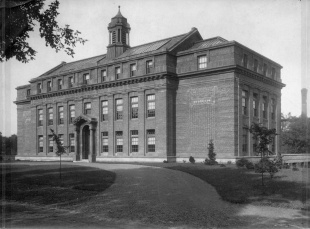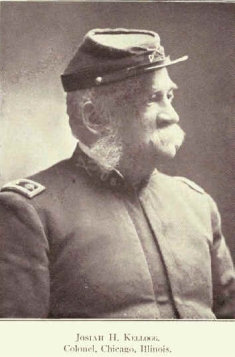Looking Back: A Brief History of Rutgers School of Engineering

During the first half of the nineteenth century, the Industrial Revolution pushed the United States into a new era of innovation and efficiency. New technology allowed Americans to abandon manual labor methods for machines, leading to improved production of everything from chemicals to crops. The economy was better than it ever was. Nobel Prize winning economist Robert E. Lucas, Jr., even expressed his shock at the country’s growth, writing that, “nothing remotely like [the country’s] economic behavior [was] mentioned by the classical economists, even as a theoretical possibility.”
Every American citizen felt the country’s success; the revolution improved almost every aspect of daily life. For Congressman Justin Smith Morrill, the revolution meant improved science education. Under the influence of Midwestern professors and farmers’ call for creation of agricultural colleges, Morrill drafted the Morrill Land-Grant Act to develop a practical education in the sciences that fueled the Industrial Revolution. The bill proposed distribution of 30,000 acres of land to every state for each member of Congress the state had. The land would house the state’s so-called land-grant college dedicated to science education. President Buchanan vetoed the act in 1857, but in 1862 President Lincoln signed it into law under the condition the institutions would teach its students military tactics in addition to science in preparation for the Civil War.

After much debate with Princeton University, Rutgers College became the official land-grant college of New Jersey in 1862. The college’s Board of Trustees established its science institution, Rutgers Scientific School, two years later. The admission requirements were arithmetic, algebra, English grammar and geography. Led under the guidance of George H. Cook, a geologist and professor of chemistry, the institution taught engineering, agricultural sciences and military tactics. Its first class of 13 students included 7 engineers. Educated by Brevet Major Josiah Holcomb Kellogg of West Point, the engineers all graduated with Bachelors of Science in civil engineering. Their curriculum, like those of today’s engineering programs, focused heavily on math. The students also took courses in electricity and mechanics of materials, but the school would not establish departments for electrical and mechanical engineering until after the turn of the century.
With these three departments established, Rutgers Scientific School grew rapidly. Space, however, was limited. With a $25,000 gift from Andrew Carnegie, Rutgers College president William Demarest then ordered the construction of an engineering building at what is now Voorhees Mall on College Avenue campus. Completed in 1909, the building cost a total of $70,000 and contained several laboratories and classrooms. Rutgers College named the building Murray Hall after David Murray, a professor of mathematics and astronomy who assisted George H. Cook in establishing Rutgers Scientific School. The building is still in use today by Rutgers University’s Department of English.
The erection of Murray Hall led to Rutgers Scientific School’s separation from Rutgers College in 1914. The school then became the College of Engineering under its first dean, Alfred A. Titsworth of the Department of Civil Engineering. The College of Engineering would see its next expansion in 1945 with the addition of the Department of Ceramics by the Board of Trustees. Established in 1902, Rutgers housed the department in a building on Old Queen’s Campus. Equipped with a workshop, kiln-room, classroom, and laboratory, the building allowed its professors and students to plant the roots for the Department of Materials Science and Engineering.
During the 1950s, the Cold War pushed the United States to again better its education system. After the Soviet Union sent the satellite Sputnik into orbit in 1957, the federal government increased its spending on academic science research. With a growing student population, Rutgers did not hesitate to accept a government bond of $3,700,000 to expand its campus. With funding from extra sources, Rutgers relocated College of Engineering from College Avenue to Busch campus with a new building which cost a total of $5,480,963. Multi-winged, the building allowed the existing College of Engineering to exist completely on one campus, fully equipped with laboratories and classrooms. Completed in 1962, the building housed all of the engineering departments in one location, including a new Department of Chemical and Biochemical Engineering which was established in 1964.
Over the next forty years, the school would continue to grow with the addition of degrees in industrial and systems engineering, biomedical engineering, packaging engineering, aerospace engineering, and environmental engineering. The School of Engineering now serves as the home of over 200 faculty members and 5,000 undergraduate and graduate students. While it has grown tremendously from its modest class of 7 students in 1864, the institution continues to provide its students with an education that prepares them for their careers as future engineers.
By Ingrid Paredes ENG'16